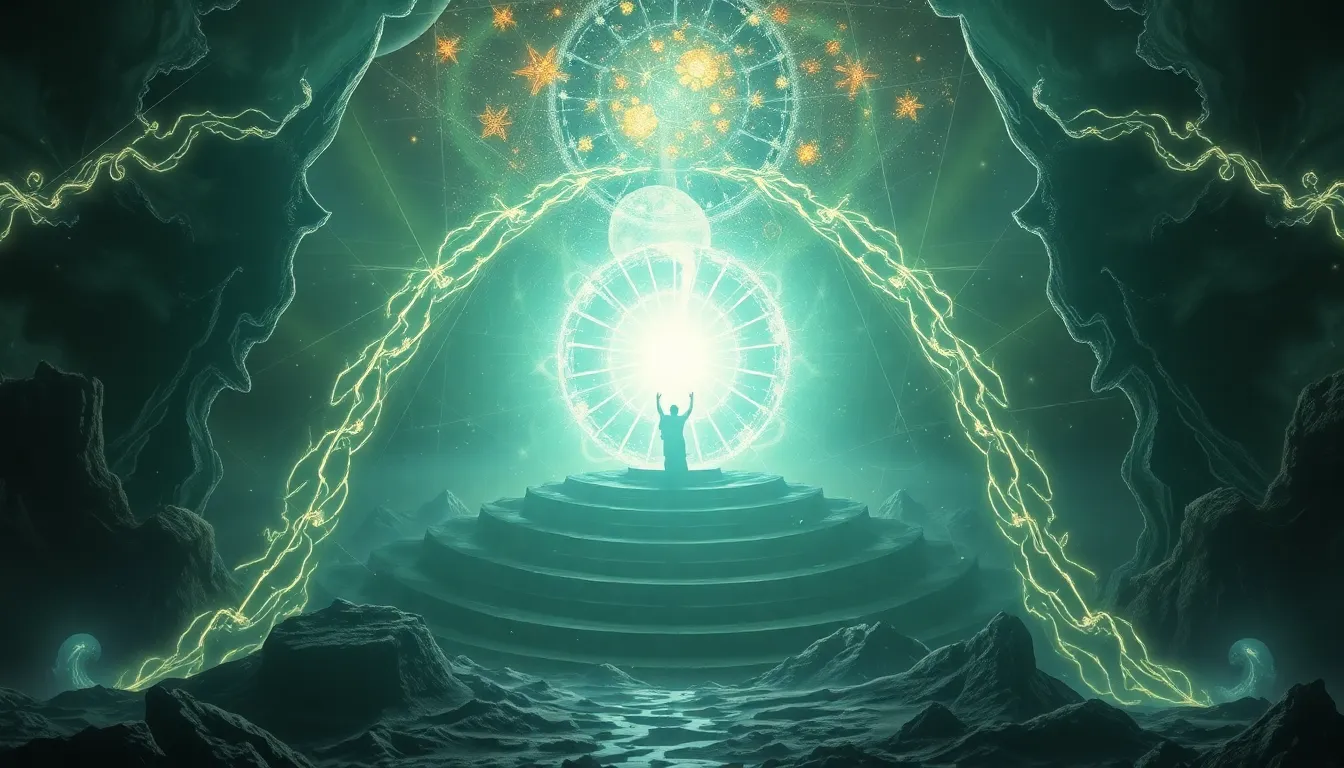The Summit of the Unknown: Myths of Mystery and Intrigue
I. Introduction to the Enigmatic Summit
The term Summit of the Unknown evokes images of towering peaks shrouded in mist, where secrets lie hidden and legends take flight. This phrase encapsulates the essence of mysterious mountains that have captivated human imagination throughout history. The allure of mystery in folklore and myth often stems from humanity’s intrinsic desire to explore the unknown, to seek answers in the shadows of our environment.
This article delves into various myths surrounding summits around the world, examining how ancient stories and beliefs continue to shape our understanding of these majestic natural formations.
II. Historical Context of Mysterious Summits
Ancient civilizations revered mountains as sacred spaces, often attributing divine significance to their peaks. From the towering Himalayas to the majestic Andes, mountains were seen as the abode of gods or as portals to other realms.
- Ancient Civilizations and Their Sacred Mountains: Cultures such as the Greeks regarded Mount Olympus as the home of their deities, while the Incas worshipped the Andes as sacred ancestors.
- The Role of Geographical Features in Myth Creation: The imposing and often inaccessible nature of mountains has historically inspired myths that explain their existence, creation, and the forces that inhabit them.
- Notable Historical Summits and Their Legends: Many famous mountains, such as Mount Fuji in Japan or Mount Sinai in the Middle East, are steeped in rich narratives that echo through the ages.
III. The Archetype of the Mountain in Mythology
Mountains serve as powerful symbols across various cultures, representing obstacles, aspirations, and the connection between the earthly and the divine.
- Symbolism of Mountains Across Cultures: In many beliefs, mountains symbolize stability, permanence, and the journey towards enlightenment.
- Common Themes Associated with Summits in Myths: Themes such as ascension, trials, and divine encounters frequently appear in mountain-related narratives.
- Examples from Major Mythological Traditions:
- In Greek mythology, Mount Olympus is a realm of gods.
- In Hinduism, Mount Meru is considered the center of the universe.
- Indigenous myths often depict mountains as ancestors or powerful spirits.
IV. Legendary Creatures and Spirits of the Summit
High altitudes are often associated with enigmatic beings, adding to the mystique of mountain summits.
- Famous Creatures Associated with Mountains: Legends of the Yeti in the Himalayas and Bigfoot in North America illustrate humanity’s fascination with elusive creatures that might inhabit these remote areas.
- Spirits and Deities Believed to Inhabit High Places: Many cultures believe that mountains are home to spirits or deities that protect the land and its people.
- The Impact of These Legends on Local Cultures and Tourism: The allure of legendary creatures has sparked tourism and cultural pride, leading to festivals and events celebrating these myths.
V. Quest Narratives: Heroes and Their Journeys
Mountains often serve as the backdrop for epic quests, where heroes confront challenges that lead to personal growth and transformation.
- Analysis of Hero Myths Involving Mountain Summits: Many narratives feature heroes who must scale mountains to achieve their goals or gain wisdom.
- The Significance of Quests in Understanding Human Nature: These stories reflect fundamental aspects of the human experience, including struggle, perseverance, and the quest for meaning.
- Comparison of Various Hero Journeys in Different Mythologies: From Hercules’ labors to the journeys of Native American heroes, the mountain quest archetype resonates across cultures.
VI. The Psychological Appeal of the Unknown
The human fascination with the unknown is deeply rooted in psychology, with mountains serving as potent symbols of both fear and curiosity.
- The Human Fascination with the Unexplained: Mountains represent boundaries between what is known and what lies beyond; they compel us to explore.
- Psychological Theories Related to Fear and Curiosity: Theories such as the fear of the unknown highlight our instinctive reactions to mystery.
- How Myths Fulfill Our Need for Understanding the Unknown: Myths provide frameworks for interpreting the inexplicable, giving us narratives to navigate our fears.
VII. Modern Interpretations of Ancient Myths
In contemporary culture, ancient myths continue to resonate, often reinterpreted in various forms of media.
- How Contemporary Culture Reinterprets Summit Myths: Modern literature, film, and art frequently draw inspiration from ancient mountain legends.
- The Role of Literature, Film, and Art in Myth Revival: Creators use these myths to explore contemporary themes, reflecting society’s ongoing relationship with nature and the unknown.
- Case Studies of Modern Adaptations of Ancient Stories: Films like The Hobbit and books like The Alchemist reinterpret the quest narrative, linking past and present.
VIII. The Intersection of Science and Myth
The relationship between myth and science is complex, with each influencing the other’s understanding of the natural world.
- Scientific Explorations of Legendary Summits: Expeditions to legendary mountains often seek to uncover truths behind the myths, blending exploration with scientific inquiry.
- How Myth Influences Scientific Inquiry and Exploration: Myths can inspire scientific questions, leading to discoveries about ecosystems and biodiversity.
- The Relationship Between Myth and Modern Environmental Awareness: Many myths emphasize the importance of nature, encouraging conservation efforts in increasingly globalized times.
IX. The Future of Summit Myths in a Globalized World
As the world becomes more interconnected, the fate of local myths and traditions hangs in the balance.
- The Impact of Globalization on Local Myths and Traditions: Globalization can dilute unique cultural narratives, but it can also foster cross-cultural exchange.
- Preservation Efforts for Endangered Mythologies: Efforts to document and preserve oral traditions are crucial for maintaining cultural heritage.
- The Potential for New Myths in a Rapidly Changing World: As societies evolve, new myths may emerge to address contemporary challenges and aspirations.
X. Conclusion: Embracing the Mystery
Myths surrounding mountain summits play a vital role in human culture, offering insights into our fears, aspirations, and the mysteries of existence. As we navigate a world filled with uncertainty, these ancient stories remind us of the significance of exploration, both of the outer world and the inner self.
The continuing relevance of summit myths in contemporary life serves as a testament to the enduring power of storytelling, urging us to embrace the mystery that lies beyond the horizon.



